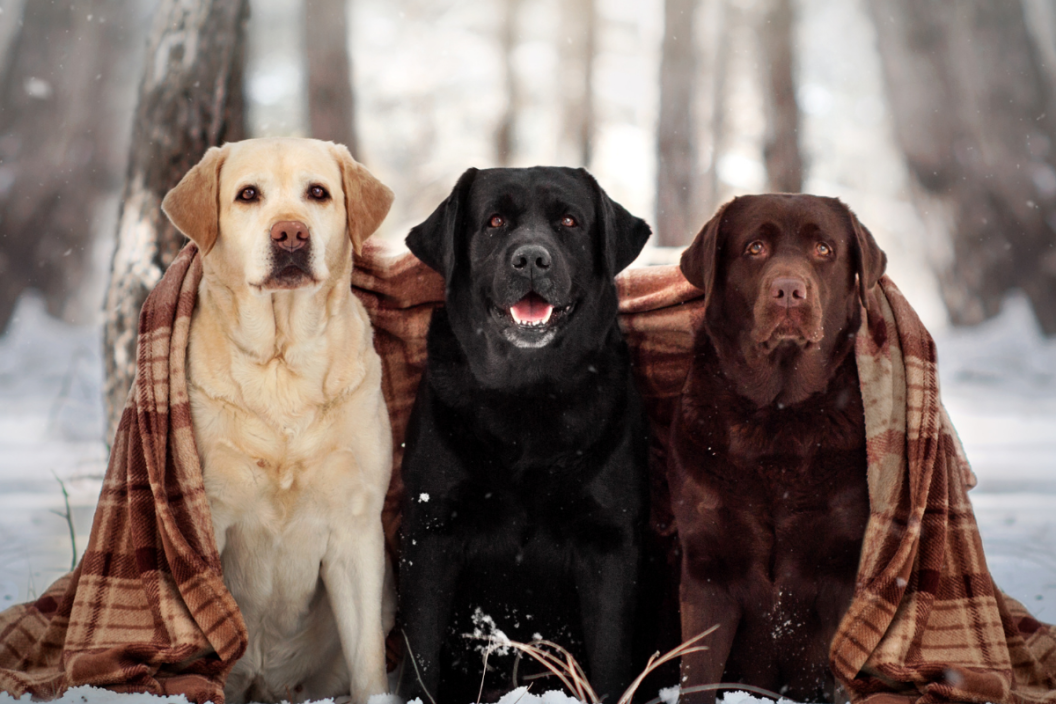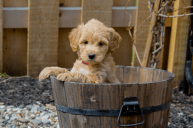The Lab is a very popular dog in the United States, but how much do you really know about the beautiful Labrador colors?
There are a lot of things you might not know about Labrador Retrievers. Have you ever wondered why Labrador Retrievers have particular coat and eye colors? It's all due to genetics. Dog breeders need to have a great understanding of how genetics works to breed for particular colors and to be able to avoid hereditary diseases and conditions.
But if you're an everyday dog owner and not an active breeder, you won't have that same genetics background, and that's why we're here. A combination of alleles determines the genetic coloration of Labrador Retrievers. What does that mean? We've broken it down for you.
The Basics of Dog Genetics
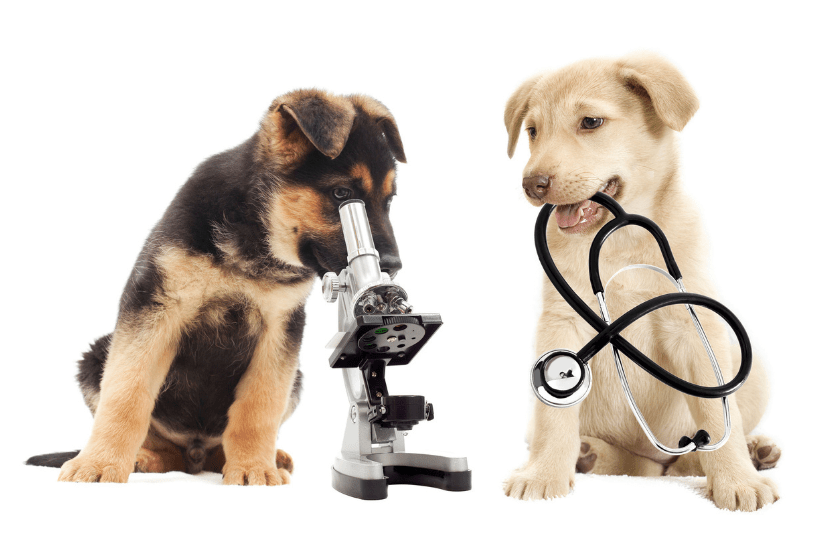
Genetics can be a tricky concept to grasp. Whether you're looking for the genetics of obesity to help your pup lose weight, or just trying to figure out why he looks the way he does, genetics play an important role in the outcome. With Labrador Retrievers, three basic colorations from two different genes create a complicated Punnet square. But add in two more genes that determine the "unrecognized" Labrador breed colors, and you've spun a web of possibilities.
Can two Labs of the same color have dogs of a different color? Are all of the puppies in a Labrador litter the same color? Which coat is the most common? And how do dilute genes, solid color coats, and crossbreeding factor in?
We're here to answer all those questions and more in as easy a manner as possible, because genetic-talk can be ruff.
Genetic Makeup & Labrador Colors
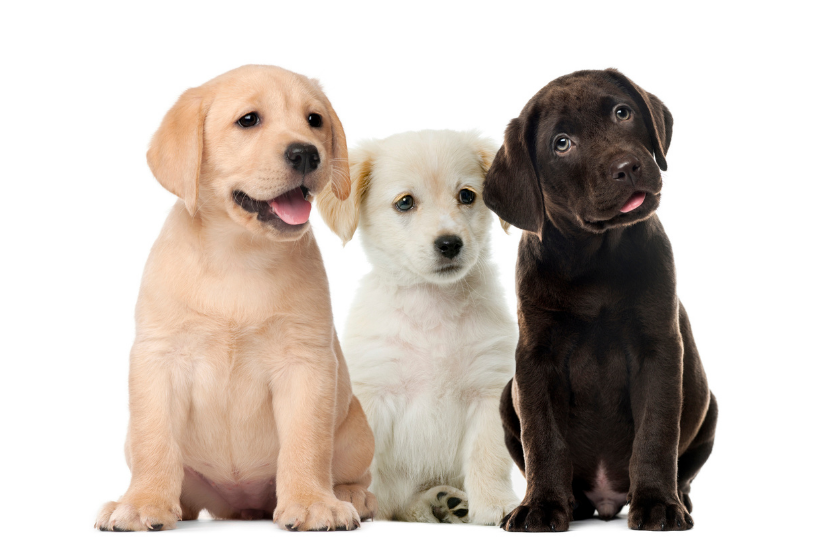
A gene has two alleles, one from each parent, that are paired to create a genotype. This distinguishes a phenotype. Together, this means the genetic coding expresses a physical or behavioral trait, resulting in short tails for certain Manx cats, tabby cat coat colors, and of course, the color and other physical traits of your Labrador Retriever. These alleles are usually designated by a capital letter, the dominant trait (a.k.a. the dominant gene), and a lowercase letter, the recessive trait (a.k.a. recessive gene).
Two dominant alleles create a dominant trait, as is the case with black Labs. If a dominant and recessive allele are paired, the dominant trait can override the recessive trait or result in a "mixed" trait that becomes its own phenotype, such as the chocolate Labrador Retriever.
Sometimes, When two recessive alleles are paired, they get superpowers of their own, as with yellow Labradors.
In Labradors, the B and E genes result in black, yellow, and chocolate Labradors. For example, BB becomes a black Lab. A Bb dog is also a black Lab but it carries the chocolate gene, which can be passed on to its offspring. Brown Labs have a bb genotype. Yellow Labs are characterized by a recessive epistatic gene, ee.
But every Labrador Retriever has both sets of genes which can come in any combination of capital and lowercase letters—dominant or recessive alleles. Regardless of the combination of B genes, anytime the ee genotype is present, it masks the B coloration. For example, an EEBb dog would have a black coat (i.e. a black dog), but an eeBb dog would have a yellow coat.
Let's take a look at the possible genotypes and their subsequent phenotypes.
Lab Genotypes and Phenotypes
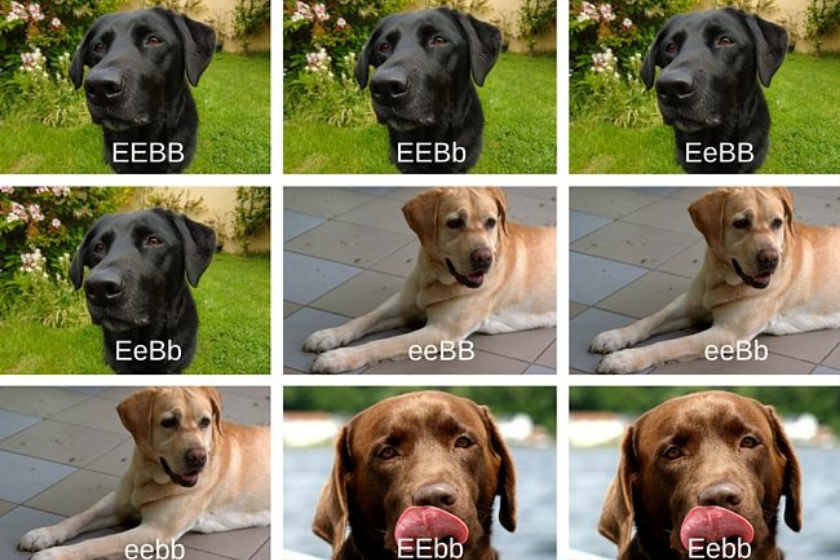
Stacey Venzel
Notice that black Labradors are dominant, therefore having the most possibilities. Both yellow Labs and chocolate Labs are recessive, but because a yellow Lab's ee genes mask both the black and chocolate coloration, yellow Labs are more common than chocolate Labs
In fact, due to their rarity, it wasn't until the 20th century that the chocolate Labrador was recognized as an official breed.
Based on this combination of alleles, can you determine what color coat a Labrador puppy could have if its dad was EEBb and its mom Eebb?
Here are the possible genetic variations in the offspring.
Lab Genetic Variations in Offspring
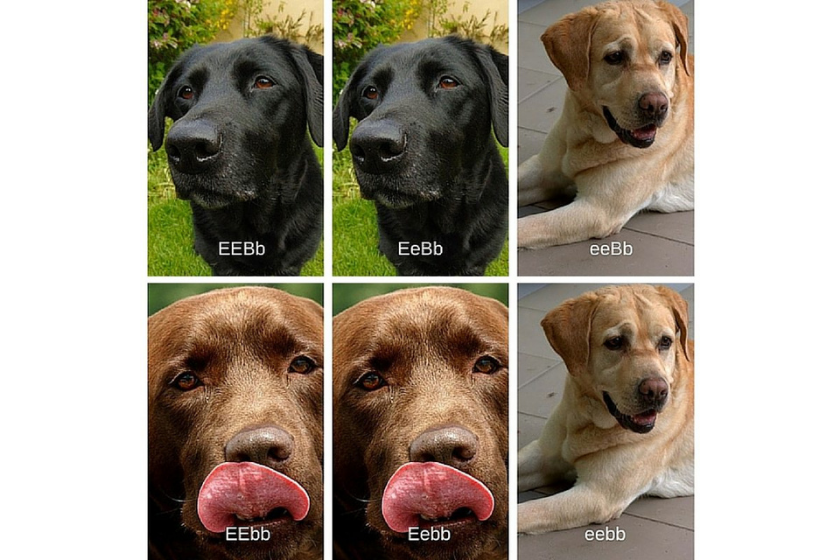
Stacey Venzel
So can a black Lab and dark chocolate Lab have a yellow Lab? The answer is yes! A litter of Labradors can vary in coloration and have a different coat color than the parents. Here's a breakdown of the possible pigment combinations when two Labradors breed:
- Black + Black = Black, Chocolate or Yellow
- Black + Yellow = Black, Chocolate or Yellow
- Black + Chocolate = Black, Chocolate or Yellow
- Chocolate + Chocolate = Chocolate or Yellow
- Chocolate + Yellow = Black, Chocolate or Yellow
- Yellow + Yellow = Yellow
Since chocolate Labs will not carry the black gene, they cannot produce black puppies. Because yellow Labs override black and brown colors, two of them will create only a yellow litter with yellow puppies.
Now that we've clarified that, let's add silver and fox red (or Ruby) Labrador Retrievers to the mix. The D gene in its recessive dd combination can mute the coloration of a Labrador, resulting in a gray or silver-colored coat.
Fox red puppies vary in color intensity based on their expression at the C locus. Neither the silver Labradors nor the fox red colors are designated as official dog breeds by the American Kennel Club's breed standards. Instead, the AKC classifies them as either black, chocolate, or yellow Labs.
So, What Is a Silver Lab?
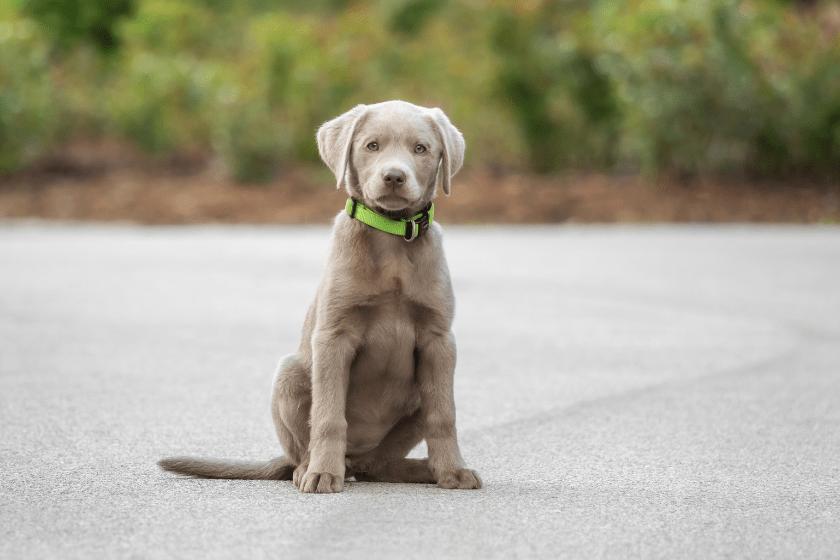
What you may recognize as silver is actually just a diluted version of the chocolate color. How much "silver" dilution varies depending on the dog, so some silver labradors appear more grey, some present a shiny silver, and others are closer to chocolate. Many people think that the Silver Lab is very like that of a Weimaraner because the same gene is possible. Plus the dilute color happens in other breeds too. Yet, these beautiful dogs are relatively new.
Many silver Labradors have been registered with the American Kennel Club (AKC), not as silver (not a color permitted under the Labrador breed standard) but as Chocolate. And many kennel clubs and breeders oppose the silver Labrador Retriever. They are concerned about health issues and feel silver breeders are dishonest about the origins of the silver Labrador. They also think this silver coat threatens the purity of the breed.
You may also notice that charcoal Labradors and champagne Labs are also missing from the list of coat colors! Do your research before investing in these pups!
Purebred Labrador Retrievers should be the same color, although occasional white spots can occur on one or two individuals in a litter. If "mismarks" are found throughout the entire litter, then the puppies are not purebred and may get docked in the show ring. If you're going to pay for expensive purebred puppies with spots, you might as well find out how much a Dalmatian costs!
Tufts of white fur between the toes or around the muzzle are one of the most common mismarks in a purebred. Patches of black on yellow dogs or tan splashing on chocolate coats is rare but can happen in a breed of pure Retrievers. Most owners think these spots make their pup extra special. (The dogs likely agree.)
Now that you know everything there is to know about the genetics behind coat color of Labrador Retrievers, you can trace the lineage of your pup or predict future litters. It's easier than you thought, right?
Learn more about the Labrador Retriever breed, and where to find responsible breeders, on the Labrador Retriever Club (LRC) website.
What color is your Labrador Retriever? Tell us on the Wide Open Pets Facebook page!
This article was originally published November 23, 2019.
